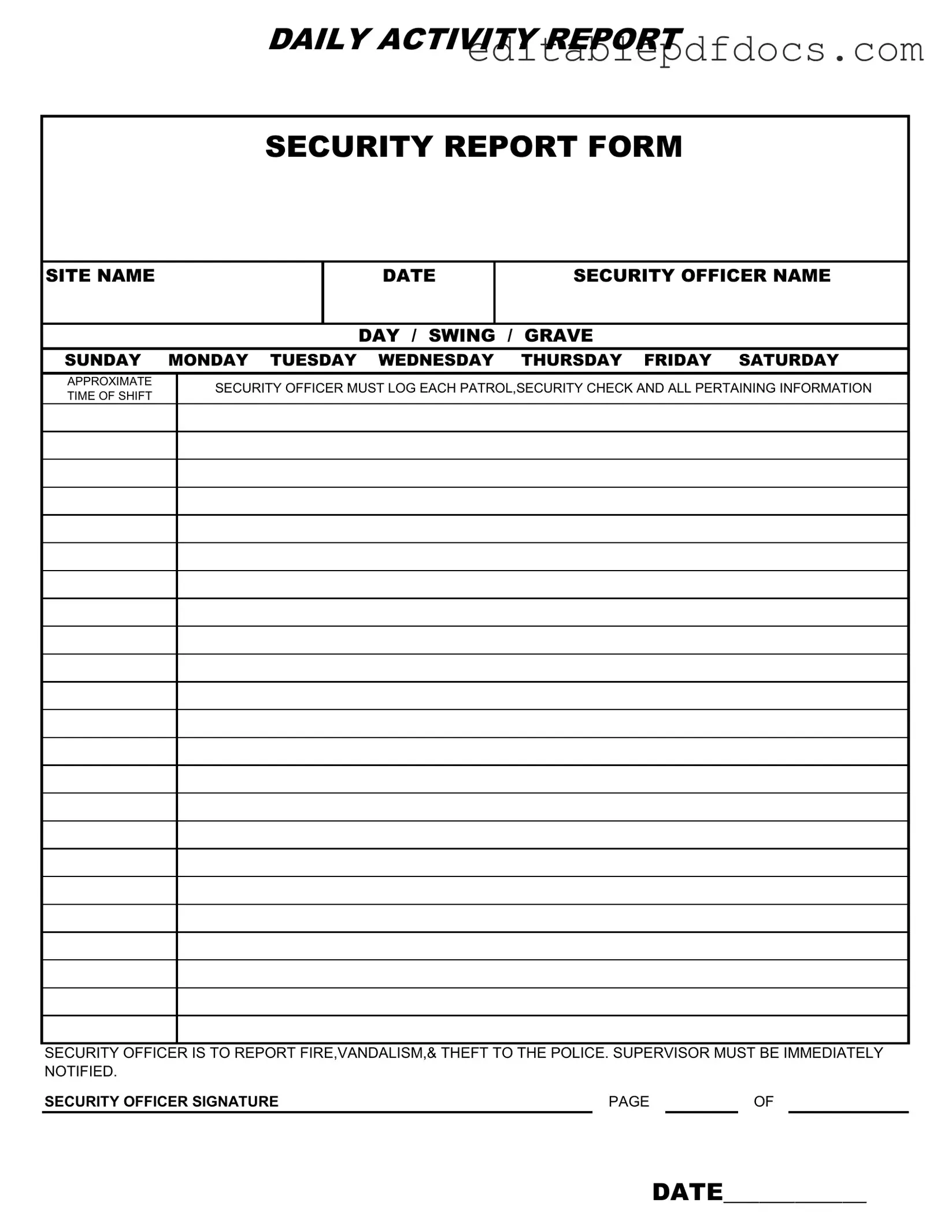Filling out the Security Guard Daily Report Sample form requires attention to detail. One common mistake is failing to include the site name. Without this information, the report lacks context, making it difficult for supervisors to assess the situation accurately. Always ensure that the site name is clearly indicated at the top of the form.
Another frequent error is neglecting to record the date of the report. The date is essential for tracking incidents and understanding patterns over time. Omitting it can lead to confusion and miscommunication about when events occurred.
Security officers often forget to specify their shift type—day, swing, or grave. This detail is crucial for supervisors to understand the context of the report. Without it, the report may not provide an accurate picture of the security environment during that time.
Many security officers also overlook logging each patrol and security check. This omission can result in gaps in the report, leaving out vital information about the security measures taken during the shift. Each patrol should be documented with approximate times to maintain a clear record.
In some cases, officers fail to report incidents such as fire, vandalism, and theft to the police. This is a serious oversight. Not only does it compromise safety, but it also may violate protocols. Officers should ensure that all incidents are documented and reported promptly.
Another common mistake is not notifying the supervisor immediately after an incident. Timely communication is essential for effective response and resolution. Delaying this step can hinder the overall safety and security of the site.
Lastly, the signature of the security officer is often missing. This signature serves as verification that the report is complete and accurate. Without it, the report may be considered invalid, leading to complications in accountability.
